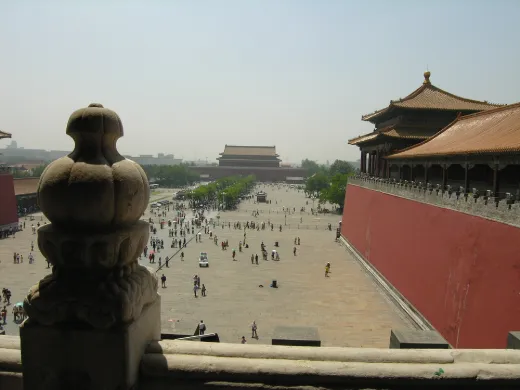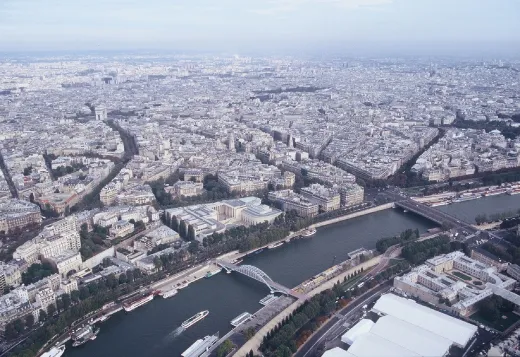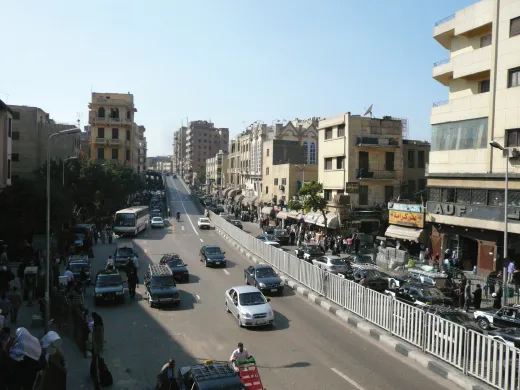
eBook - ePub
The Historic Urban Landscape
Managing Heritage in an Urban Century
Francesco Bandarin, Ron van Oers
This is a test
Share book
- English
- ePUB (mobile friendly)
- Available on iOS & Android
eBook - ePub
The Historic Urban Landscape
Managing Heritage in an Urban Century
Francesco Bandarin, Ron van Oers
Book details
Book preview
Table of contents
Citations
About This Book
This book offers a comprehensive overview of the intellectual developments in urban conservation. The authors offer unique insights from UNESCO's World Heritage Centre and the book is richly illustrated with colour photographs. Examples are drawn from urban heritage sites worldwide from Timbuktu to Liverpool to demonstrate key issues and best practice in urban conservation today. The book offers an invaluable resource for architects, planners, surveyors and engineers worldwide working in heritage conservation, as well as for local authority conservation officers and managers of heritage sites.
Frequently asked questions
How do I cancel my subscription?
Can/how do I download books?
At the moment all of our mobile-responsive ePub books are available to download via the app. Most of our PDFs are also available to download and we're working on making the final remaining ones downloadable now. Learn more here.
What is the difference between the pricing plans?
Both plans give you full access to the library and all of Perlego’s features. The only differences are the price and subscription period: With the annual plan you’ll save around 30% compared to 12 months on the monthly plan.
What is Perlego?
We are an online textbook subscription service, where you can get access to an entire online library for less than the price of a single book per month. With over 1 million books across 1000+ topics, we’ve got you covered! Learn more here.
Do you support text-to-speech?
Look out for the read-aloud symbol on your next book to see if you can listen to it. The read-aloud tool reads text aloud for you, highlighting the text as it is being read. You can pause it, speed it up and slow it down. Learn more here.
Is The Historic Urban Landscape an online PDF/ePUB?
Yes, you can access The Historic Urban Landscape by Francesco Bandarin, Ron van Oers in PDF and/or ePUB format, as well as other popular books in Architettura & Storia dell'architettura. We have over one million books available in our catalogue for you to explore.
Information
1.
Urban Conservation: Short History of a Modern Idea
Of this I am quite sure, that if we open a quarrel between the past and the present, we shall find we have lost the future.
Sir Winston Churchill
The Origins of Urban Conservation: Between Engineering and Romanticism
Urban conservation is an idea of modern times. While the sense of community, identity and pride linked to civic tradition and beauty is as old as urban civilisation and certainly belongs to all cultural contexts, the idea of urban conservation was developed in the aftermath of the French Revolution, when a new social and economic order in Europe was emerging in the nineteenth century. The basis of the modern vision of cultural heritage was developed in recognition of the value of the historic monument, as shown by Françoise Choay (1992).
The emergence of the notion of ‘heritage’ is linked to the establishment of modern nation states and the need to define their own traditions and identities.
In the drive to forge national identities, which characterised the nineteenth and twentieth centuries, the ‘historic monument’ became a way to celebrate national epics and to create traditions (Hobsbawm, 1983).
The safeguarding of ‘historic monuments’ has been at the centre of the theory and practice of conservation over the last century. This influenced the approach to historic cities that focused primarily on monuments and less on the urban fabric and public spaces.

Athens

Beijing
Institutions such as the Commission des Monuments Historiques created in France in 1837, extensive inventories of monuments such as the one developed by Prosper Mérimée1 in the mid-nineteenth century, and the Society for the Protection of Ancient Buildings created by William Morris2 in Great Britain in 1877, demonstrate the growing importance of heritage and monuments in the development of modern society in Europe, supported by the greatest intellectual figures of the time, such as Victor Hugo.3
This important movement, however, did not concern the historic city, but was rather focused on individual monuments of the past. Throughout the nineteenth century, and for a large part of the twentieth century, public policies concerning the city were aimed mainly at addressing the representation of the powers of the state, the modernisation of transport systems, the improvement of public spaces, the residential needs of the emerging upper and middle classes and the improvement of housing conditions of the working classes.
The Industrial Revolution had brought the rural masses to cities that already lacked basic hygiene. For most of the century, and until a new awareness of its heritage value was created, the historic city was viewed essentially as a place of physical and moral decay. The denunciation of these conditions by Engels4 about England (1845) and Considérant5 about France (1848), to mention some famous examples, gave rise to a wave of innovative and utopian experiments led by social thinkers, philanthropists and politicians.
The Phalanstère of Fourier6 and the New Lanark of Robert Owen7 were utopian responses to the crisis, which inspired important social reforms and represented a key contribution to the definition of modern urban planning principles.
They did not, however, create a force of change for the historic city as powerful as that of the ‘urban engineers’ movement that intended to remedy the unsanitary conditions of the working classes (Calabi, 1979; Zucconi, 1989). The main concern of the engineers was to demolish large parts of the historic city to create better housing, open spaces and sanitation infrastructure: these policies had an extensive impact on urban planning for over a century and are in place in many cities in the emerging world even today (among others in China).
Demolition in the name of health and security has been an established practice since the nineteenth century in Europe and in many other regions of the world and it is still continuing today. The loss of fabric and the change of uses often impact on the meaning of places.

Paris

Cairo
Every industrialising country, in Europe, America, and even in Meiji Japan, developed regulations and plans to clear the decayed parts of the city: many historic cities witnessed renewal processes ranging from the demolition of the inner city walls to the opening of new squares and avenues.
Even places of great civic tradition such as Florence in Italy were not spared, when in 1865 the old Piazza del Mercato Vecchio was replaced by the present Piazza della Repubblica, wiping out the medieval quarters and the old ghetto. This risanamento (sanitisation) subsequently served as a model for many other cities, both in Italy and elsewhere.
Certainly, however, no renewal plan equalled and became so influential in the world as the grands travaux launched by Baron Haussmann8 in Paris between 1850 and 1870.
Haussmann’s plans were not aimed at local situations; rather, they sought to redesign the entire city to respond to the demands of modern life (traffic in particular), to develop new residential and commercial spaces for the high-income and middle-income classes, and to facilitate tighter military control of the city after the 1848 uprising (Pinon, 2002).
The extent of the changes brought about by Haussmann was only surpassed by reconstructions of entire cities destroyed by disaster or war, such as London in the seventeenth century, Lisbon in the eighteenth century and Berlin in the twentieth century.
Moreover, the ‘Haussmannian model’ was applied in many other capitals and historic cities, both in Europe and elsewhere; the historic centre of Rome, after it became the capital of Italy in 1870, was the subject of a similar plan. Cairo, Teheran, Sofia and Istanbul, as well as many colonial capitals in the Mediterranean, were also inspired by the successes of the Baron in their grand plans.
As the urban historian Spiro Kostof9 has shown, ‘Haussmannian’ methods have never really disappeared: we can find their traces in the work of Robert Moses in New York in the 1950s, as well as in many ‘urban renewal’ projects that have been undertaken in Europe, America and other parts of the world in the post-Second-World-War period, not to mention processes currently under way in many Asian cities.
Throughout the nineteenth century, the historic city was not recognised as a heritage system. What mattered were the monuments that were symbols of its tradition: the cathedrals, the palaces, the gardens, and the statuary.
The historic city as a heritage category in the modern sense was defined much later, towards the end of the nineteenth century and in the first half of the twentieth century. And only in the second half of the twentieth century did the conservation of historic cities become a subject for planners and architects, first in Europe, and later in other regions.
The ‘institutionalisation’ of heritage that followed the French Revolution, with the creation of specialised bodies of conservators, was society’s response to the emergence of this concept and testimony of its value in the public domain. This was matched by an important intellectual debate around heritage that shaped modern conservation methodologies and practices.
Most of the modern concepts of heritage were developed 100 to 150 years ago by a group of theoreticians and administrators, who viewed the preservation of monuments of the past as a pillar of social and cultural development. John Ruskin10 – and later William Morris – saw in the pre-industrial city one of the most important legacies of history and he struggled for its preservation.
This ‘romantic’ approach was essentially a form of opposition to the ongoing modernisation and destruction brought about by the Industrial Revolution. While it did not generate a theory of urban conservation, it certainly contributed to the development of a vision of the historic city as ‘common’ heritage, beyond national borders.
This important period witnessed contradictions and even clashes between different conceptions of heritage, the most remarkable being the clash between the romantic vision of Ruskin in England and the militant interventionism professed and practised by Eugène-Emmanuel Viollet-Le-Duc11 in France.
In his famous book, The Seven Lamps of Architecture, Ruskin says: ‘Neither by the public, nor by those who have the care of public monuments, is the true meaning of the word restoration understood. It means the most total destruction which a building can suffer: a destruction out of which no remnants can be gathered: a destruction accompanied with false description of the thing destroyed. Do not let us deceive ourselves in this important matter; it is impossible, as impossible as to raise the dead, to restore anything that has ever been great or beautiful in architecture.’12
For Viollet-Le-Duc, restoration of a building was the reconstitution of a ‘complete’ and ‘ideal’ state of the monument, one that perhaps never existed. As he observed in the Dictionnaire Raisonné, restoration of a building is not to maintain it, repair or rebuild it, but to re-establish it in a complete state that may never have existed at a particular moment. And this approach applied not only to individual monuments, such as Notre Dame in Paris, but also to urban complexes, as shown by his restoration and reconstruction of the city of Carcassonne.
However, Viollet-Le-Duc does not reject the past. His thinking is resolutely forward-looking, as shown in his Entretiens sur l’architecture published between 1863 and 1872, a fundamental book for understanding how the social and technological changes of the nineteenth century transformed the role of architecture and the city (Viollet-Le-Duc, 1977).
In looking at ancient buildings, Viollet-Le-Duc sought to find a method to identify the continuities of architectural development, in order to establish the basis of a practice that would allow modern society to find its own language, beyond the many revivals of the time. In a way, Viollet-Le-Duc opened the way to a modern interpretation of architectural and urban heritage, which was later developed by the Austrian architect Camillo Sitte.13 While other positions on the issue of restoration emerged in other parts of Europe,14 the polarisation between the nostalgic and interventionist approaches, just described, remained alive for a long time, and may not have completely vanished yet.
Thanks to the contributions of these visionary thinkers and practitioners, the scene was set, at the turn of the twentieth century, for the appearance of modern ideas on conservation.
The key theoretical development came from the great Viennese art historian Alois Riegl,15 whose ideas defined the role of heritage in contemporary society and still form the basis of our theories of heritage conservation.
In his seminal book, The Modern Cult of Monuments (Der Moderne Denkmalkultus), he identifies two categories of value of heritage (Riegl, 1903).
The first category is the value of ‘memory’ (Erinnerungswerte) and refers to the ‘antiquity’ of heritage as a factor of importance. Appreciating the ‘value of antiquity’ does not require a special education, and, on the contrary, is a concept which is easily accessible to the public (the ‘masses’).
Urban monuments have taken a prominent role in the creation of national identities in all parts of the world. They celebrate the founding fathers of a nation (Kemal Atatürk or George Washington), mark the institutions of government, (for...